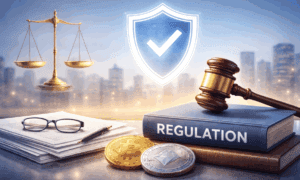In our current hyper-connected world, the typical American home has over 20 internet-connected devices, ranging from smart TVs and thermostats to phones, laptops, and even kitchen appliances. With the growth of technology also comes changes in how cybercrime is committed. Meanwhile, home cybersecurity has never been more important. Here are 10 pieces of advice for safeguarding your digital life in 2025.
Keep your software up to date
Out-of-date software is often leveraged by hackers to get into devices. This includes your PC operating system, browser, and smart device firmware. Turn on automatic updates whenever you can to mitigate the risks.
Use a Secure Wi-Fi Network
Your Wi-Fi is the key to your palace. Use a strong password (not the default one), keep your WPA3 encryption turned on, and hide your SSID (network name) from the view of passersby. Think about setting up a guest network for guests to maintain a tighter grip on your main network.
Get Trustworthy Antivirus Software Installed
Hacking tools are constantly updating and spreading further across the Internet. Antivirus is mandatory even in 2025. Opt for a known service that includes real-time protection from malware and prevention from phishing.
Clothe Your Smart Gadgets (IoT)
Baby monitors and voice assistants aren’t the only devices vulnerable to hacking. Change default usernames and passwords, disable features you don’t need, and make sure your firmware is up to date.
Make use of Multi-Factor Auth (MFA)
MFA adds another layer of security to your accounts by demanding a code that is sent to your phone or email. And if someone gets your password, MFA can help keep hackers out of your sensitive information.
Use Strong, Unique Passwords
Don’t reuse a single password on all your accounts. Let a good password manager create and save those complex passwords for you. Strong passwords are the first line of defense in home cybersecurity.
Educate Your Family
Basic precautions online are not just for the kids in the house. Train kids to identify phishing attempts, not download suspicious-looking files, and maintain good password hygiene.
Back Up Your Data Regularly
Use backup drives or the cloud to be certain of being able to recover your files in the event of a cyber attack, say, your house getting ransomware. Back up your devices regularly, and then test restoring files.
Limit Device Permissions
Apps are quick to request your camera, microphone, contacts, or location. Only give permissions when needed and revisit these settings every once in a while to keep your privacy in check.
Monitor for Unusual Activity
Watch your devices and accounts for signs of abnormal activity — weird logins, or new apps that you didn’t install, for example, or strangely sluggish behavior from a device. They could point to a security problem with your site.
Home cyber security in 2025 isn’t just about downloading antivirus software—it’s about a multilayered approach that includes securing your network throughout your home, teaching your household, and remaining vigilant. Cyber threats continue to develop, but with the right habits and tools, you can secure your digital home from the next attack. Make cyber safety a family resolution this year — because in a digital world, home is where the online is.



































